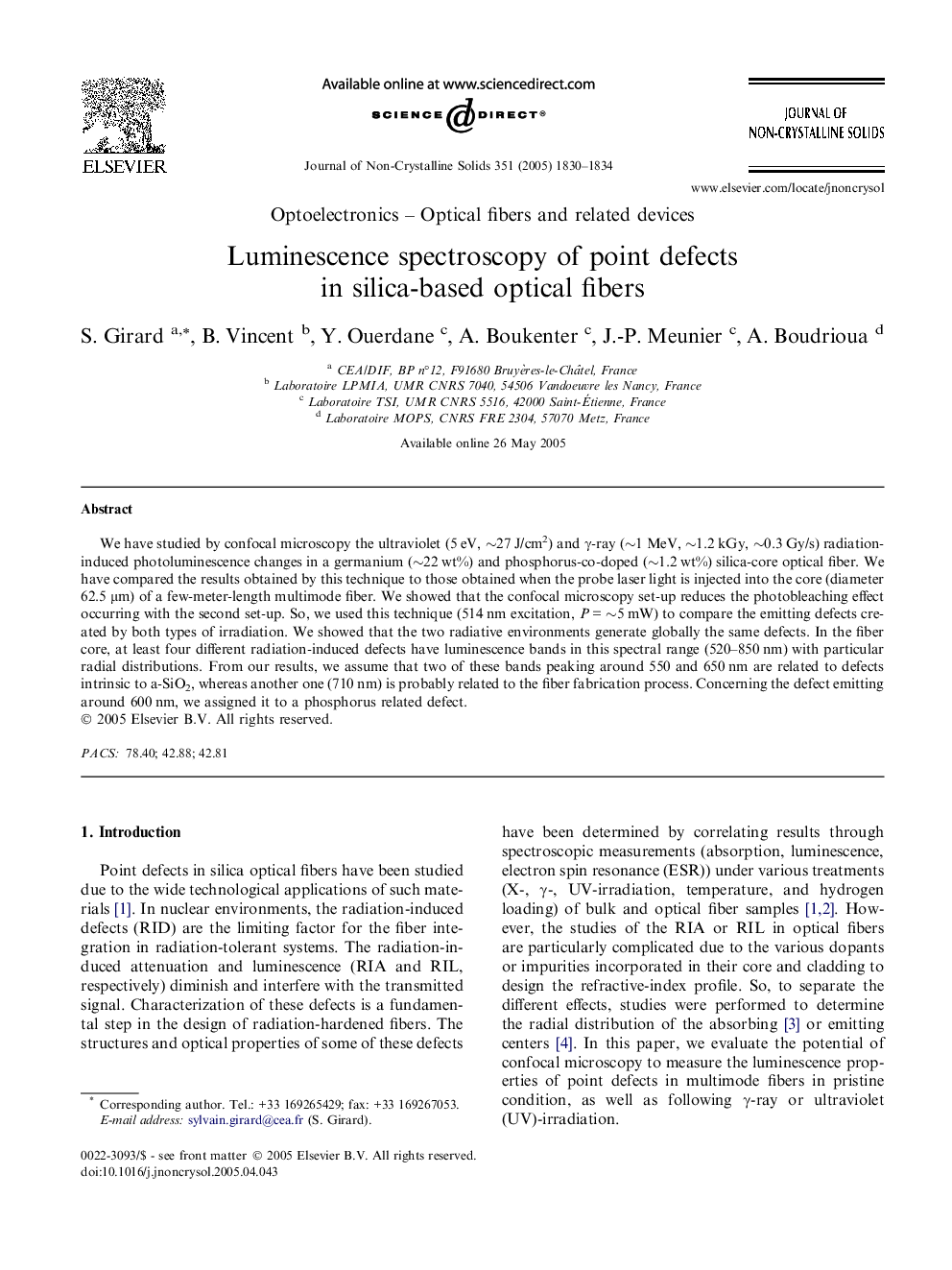| Article ID | Journal | Published Year | Pages | File Type |
|---|---|---|---|---|
| 9778024 | Journal of Non-Crystalline Solids | 2005 | 5 Pages |
Abstract
We have studied by confocal microscopy the ultraviolet (5 eV, â¼27 J/cm2) and γ-ray (â¼1 MeV, â¼1.2 kGy, â¼0.3 Gy/s) radiation-induced photoluminescence changes in a germanium (â¼22 wt%) and phosphorus-co-doped (â¼1.2 wt%) silica-core optical fiber. We have compared the results obtained by this technique to those obtained when the probe laser light is injected into the core (diameter 62.5 μm) of a few-meter-length multimode fiber. We showed that the confocal microscopy set-up reduces the photobleaching effect occurring with the second set-up. So, we used this technique (514 nm excitation, P = â¼5 mW) to compare the emitting defects created by both types of irradiation. We showed that the two radiative environments generate globally the same defects. In the fiber core, at least four different radiation-induced defects have luminescence bands in this spectral range (520-850 nm) with particular radial distributions. From our results, we assume that two of these bands peaking around 550 and 650 nm are related to defects intrinsic to a-SiO2, whereas another one (710 nm) is probably related to the fiber fabrication process. Concerning the defect emitting around 600 nm, we assigned it to a phosphorus related defect.
Related Topics
Physical Sciences and Engineering
Materials Science
Ceramics and Composites
Authors
S. Girard, B. Vincent, Y. Ouerdane, A. Boukenter, J.-P. Meunier, A. Boudrioua,
